The Israel-Hezbollah Conflict and its Geopolitical Ramifications
Since mid-September 2024, the conflict between Israel and Hezbollah in Lebanon has significantly escalated. It began with two days of intense assaults, attributed to Israel, that resulted in numerous deaths and injuries. Hezbollah’s leadership quickly vowed to retaliate, and on September 20, the group launched a series of missile strikes into northern Israel. Since then, both sides have exchanged daily missile attacks, forcing hundreds of thousands of Israelis in the north to seek refuge in air raid shelters and displacing tens of thousands of civilians in southern Lebanon, where Hezbollah maintains a strong presence.
In these escalations, several Hezbollah commanders have been targeted, including the head of its elite unit, who was killed in a strike on Beirut. The conflict reached a new height after the death of Hassan Nasrallah, who had led Hezbollah for over twenty years. His death, caused by an Israeli bombing of Hezbollah's headquarters in Beirut, marked a critical point in Israel’s intensified military campaign. This escalation has led to international calls for a ceasefire, including from France and the United States. However, Israeli authorities pursuing military actions, with reports indicating thousands of deaths in Lebanon, making this the bloodiest conflict between Israel and Hezbollah since the 2006 war.
The first major conflict between Israel and Hezbollah in 2006 lasted several days, leaving lasting scars. This article aims to analyse the ongoing conflict between Israel and Hezbollah, with a focus on how the 2006 Lebanon War continues to influence the current situation. The 2006 war, a pivotal moment in the history of Israel-Hezbollah relations, demonstrated the efficacy of non-state actors in modern warfare and highlighted the strategic importance of hybrid warfare, as Hezbollah operated simultaneously in political, military, and social spheres. The current analysis will explore the connections between the ongoing conflict and the events of 2006.
Historical Roots of Israeli-Hezbollah Tensions
The creation of the State of Israel in 1948 had profound implications across the Middle East, particularly for Lebanon’s complex sectarian composition, including its Shia community. Over 100,000 Palestinian refugees were displaced, significantly affecting Lebanon, whose sovereignty was soon challenged by this influx. The fragile sectarian balance in Lebanon complicated the integration of these refugees, introducing political and social challenges. The arrival of Palestinians in the economically disadvantaged and historically marginalized Shia regions in southern Lebanon contributed to the militarization of Palestinian groups, further destabilizing the area. These developments would lay the groundwork for Hezbollah’s eventual rise, as Palestinian factions became a key support base for the group.
By the late 1960s, the Palestine Liberation Organization (PLO), established to oppose Israeli control of Palestinian territories, gained substantial support in southern Lebanon. The PLO set up bases and launched attacks against Israel, prompting Israeli retaliatory strikes. This escalation militarized the Lebanon-Israel border and heightened tensions between Israel and Palestinian groups operating in the region.
The Lebanese Civil War (1975–1990) had a significant impact on Israeli-Hezbollah tensions, setting the stage for Hezbollah’s emergence as both a militant organization and a political force. The PLO’s presence in southern Lebanon, where they launched attacks against Israel, worsened local conditions, particularly in Shia-dominated areas. Israel’s 1978 military operation, known as Operation Litani, aimed to weaken the PLO, but it instead displaced thousands and exacerbated regional instability.
Israel's full-scale invasion of Lebanon in 1982, intended to expel the PLO, resulted in Israeli occupation of southern Lebanon, further aggravating tensions with the Shia population. This occupation paved the way for the establishment of Hezbollah, which was formed with the assistance of Iran’s Islamic Revolutionary Guard Corps (IRGC). Hezbollah became the primary resistance group dedicated to expelling Israeli forces from Lebanon, supported by both local and regional actors. The 1989 Taif Agreement, which ended the Lebanese Civil War, disarmed most militias but allowed Hezbollah to remain armed, as it was viewed as a resistance force against Israeli occupation.
Hezbollah continued its guerilla war against Israeli forces until Israel’s withdrawal from southern Lebanon in 2000, solidifying the group’s standing as both a political and military power within Lebanon. The intersection of sectarianism, Israeli occupation, and the involvement of external powers—especially Iran and Syria—defined Hezbollah’s role as the vanguard of resistance against Israel. Following years of conflict, the 2006 Lebanon War marked a significant turning point, as both sides suffered heavy losses in a conflict that resonated across the region.
The 2006 Lebanon War: A Catalyst for Unending Conflict
On July 12, 2006, Hezbollah targeted two Israeli Defence Forces' armoured jeeps near the border, killing three soldiers and capturing two. Hezbollah leader Sheikh Hassan Nasrallah declared that the captives would only be released through indirect negotiations and a prisoner exchange. In response, Israeli forces launched heavy artillery and airstrikes, targeting highways, bridges, and Hezbollah strongholds in southern Lebanon. Despite these efforts, Hezbollah managed to hold the captives, and the conflict escalated.
Prime Minister Ehud Olmert's government decided on a military response aimed at "exacting a price" and restoring Israel’s deterrence. Israel rejected Hezbollah's demand for a prisoner swap and instead retaliated with further airstrikes. Hezbollah responded by firing Katyusha rockets into northern Israel, causing casualties and damage. The conflict lasted 34 days, concluding on August 14, 2006, with the implementation of UN Security Council Resolution 1701.
In total, 153 Israelis were killed, and thousands of rockets were launched on Israel, causing widespread damage. The Lebanese side suffered between 250 and 600 casualties, with additional civilian losses. The war left a significant toll on both sides, with damage estimated in the billions of dollars. Following the ceasefire, opinions on the outcome of the war were divided, with Hezbollah claiming victory while Israel and its allies contended that Hezbollah had been weakened.
The 2006 Lebanon War reinforced a delicate balance of deterrence between Israel and Hezbollah. The conflict highlighted Hezbollah’s ability to engage in asymmetrical warfare, boosting its position as both a political and military power in Lebanon, strengthened by its ties to Iran. In response, Israel adjusted its military strategy, focusing on missile defence and pre-emptive strikes to counter Hezbollah’s growing capabilities. While the war ended in a stalemate, it cemented a fragile equilibrium where both sides understood the costs of full-scale conflict, though periodic confrontations remain likely.
Underlying Causes of the Current Israel-Hezbollah Conflict
The current escalation between Israel and Hezbollah can be traced to several interconnected factors rooted in historical and political dynamics. One key factor is Hezbollah’s growing alliance with Palestinian organizations, particularly Hamas and Islamic Jihad. This alliance has placed Hezbollah at the forefront of advocating for the Palestinian cause, intensifying its opposition to Israeli actions in the West Bank and Gaza. By aligning itself more closely with these groups, Hezbollah has increased the likelihood of direct military action against Israel, linking the Israeli-Palestinian conflict with its operations in southern Lebanon. Tensions over settlements in occupied areas, Jerusalem’s status, and recent events in Gaza have further reinforced Hezbollah’s role in the broader regional struggle against Israel.
Another significant factor is the ongoing conflict along the Israeli-Lebanese border, exacerbated by Israeli military operations in Syria. Israeli airstrikes targeting Hezbollah and Iranian forces in the Golan Heights have heightened tensions, with Hezbollah periodically retaliating, leading to further military confrontations. Hezbollah has warned that continued Israeli strikes, especially in southern Lebanon and Syria, could trigger a wider regional conflict involving its key ally, Iran.
Israel's concern over Hezbollah’s growing political and military power in Lebanon is also a driving force. Hezbollah’s dominance in Lebanese politics, combined with its military capabilities, makes it a formidable opponent. Israeli strategists view Hezbollah's rise as a long-term threat, prompting efforts to weaken its military infrastructure and limit its influence.
This confluence of factors—Hezbollah’s alignment with Palestinian groups, border tensions fueled by Israeli actions in Syria, and Israel’s concerns over Hezbollah’s increasing power—has created a volatile situation, with the potential for further escalation and serious regional consequences.
The current conflict is deeply rooted in a history of regional warfare and power struggles. Since Israel’s 1982 invasion of Lebanon, Hezbollah has evolved into a powerful military and political force, supported by Iran and Syria. The rivalry has been shaped by events such as Israel’s 2000 withdrawal from southern Lebanon and the 2006 Lebanon War, which showcased Hezbollah’s military strength. The present escalation is part of this longstanding conflict, influenced by Iran’s financial backing of Hezbollah and Israeli military actions in Syria.
Lebanon’s severe economic crisis, characterized by hyperinflation, unemployment, and crumbling infrastructure, has also contributed to the situation. In this environment, Hezbollah gains support by providing social services and financial assistance. Meanwhile, Israel, despite its more stable economy, continues to allocate significant resources to defense, shaping its social and economic policies. Both sides possess advanced military strategies and technologies, which further intensify the conflict.
The Power Struggle: Military and Technology
The military strategies of Israel and Hezbollah are shaped by their respective capabilities and operational environments. Israel, a nation-state with a professional standing army, emphasizes air superiority, precision strikes, and advanced military technology. Its tools include unmanned aerial vehicles (UAVs), the Iron Dome missile defense system, and cyberattacks. Israel’s approach focuses on preemptive actions to neutralize threats and minimize casualties, using advanced technology to eliminate potential dangers swiftly.
Hezbollah, by contrast, operates as both a political entity and a paramilitary force, employing asymmetric warfare tactics. It engages in guerrilla tactics through urban areas and rugged terrain, using ambushes and non-combat zones to shield its fighters. Hezbollah aims to wear down its opponent through rocket fire, tunnel systems, and psychological warfare, challenging Israel’s military superiority while shaping global perceptions of the conflict.
Technological advancements have become deeply embedded in the ongoing Israel-Hezbollah conflict. Hezbollah has upgraded its arsenal with advanced missile systems, enabling it to target Israeli cities and expand the battlefield beyond conventional fronts. In response, Israel has developed highly effective defence systems like the Iron Dome, which intercepts and destroys incoming missiles, saving civilian lives.
Cyber warfare has also emerged as a key element, with both Israel and Hezbollah infiltrating each other’s cyberspace to conduct intelligence operations and sabotage communications. This technological race intensifies the conflict and reshapes the strategic calculations of both sides, as each seeks to maximize its capabilities while mitigating risks.
Global Powers' Influence on the Israel-Hezbollah Conflict
Global powers and organizations play a significant role in shaping the dynamics of the Israel-Hezbollah conflict, influencing the course of peace or war through their diplomacy and strategic interests. Iran is Hezbollah’s principal sponsor, providing financial aid, advanced weaponry, and military personnel. For Iran, Hezbollah serves as a strategic buffer against Israeli threats and as a tool to expand its regional influence. Syria has also been crucial, facilitating the transfer of weapons from Iran to Hezbollah and offering logistical support during the Syrian Civil War.
On the other hand, the United States is a staunch supporter of Israel, providing military aid, cutting-edge weapon systems, and political backing. The U.S. has also focused on economic measures aimed at undermining Hezbollah’s financial networks and curtailing its global reach. Meanwhile, the United Nations, through its peacekeeping force (UNIFIL), works to monitor ceasefires and reduce hostilities along the Israel-Lebanon border, though its effectiveness on the ground has been limited.
Russia, while indirectly supporting the Syrian government and Hezbollah, has maintained ties with Israel and often plays the role of a mediator to prevent the conflict from escalating. Saudi Arabia, alongside its regional allies, has adopted strategies to weaken Hezbollah’s influence in Lebanon and across the Middle East, deepening the animosity between Gulf nations and Hezbollah.
The European Union has taken a more humanitarian and diplomatic approach, advocating for Lebanon’s political stability while acknowledging Hezbollah’s dual role as a political and military actor. International sanctions, particularly from the U.S., aim to cut off Hezbollah’s funding and limit its operations, while some countries, like France and Qatar, have pursued diplomatic negotiations to de-escalate tensions.
These varied forms of foreign involvement reflect deeper geopolitical rivalries, particularly between Iran and Western powers. Global actors seek to manage the conflict through a combination of military actions, sanctions, and diplomacy, underscoring the broader power struggles at play in the region.
About the author
MUHAMMED NIHAL K is a second-year degree student in the Department of Civilizational Studies at Sabeelul Hidaya Islamic College, Parappur, Kerala, India. He hails from Karippur, Malappuram.
References
- Norton, Augustus R. Hezbollah: A Short History. Princeton University Press, 2018.
- Hirst, David. Beware of Small States: Lebanon, Battleground of the Middle East. Nation Books, 2010.
- Hamzeh, A. N. In the Path of Hizbullah. Syracuse University Press, 2004.
- Saouli, A. Hezbollah: Socialisation and its Tragic Ironies. Edinburgh University Press, 2019.
- "The Israel-Hezbollah Conflict: Where It Stands." Council on Foreign Relations, www.cfr.org.
- "Lebanese Fear a Return to the 2006 War with Israel, or Worse — a Situation like Gaza." NBC News, www.nbcnews.com.
- "1982 to 2024: A 42-Year History of Bloodshed Between Israel, Hezbollah." NDTV, www.ndtv.com.
- Samaan, Jean-Loup. From War to Deterrence? Israel-Hezbollah Conflict Since 2006. Nova Science Publishers.
- Hasan, S. Shamir. "Israel and Hezbollah." Proceedings of the Indian History Congress, vol. 79, 2018.
Disclaimer
The views expressed in this article are the author’s own and do not necessarily mirror Islamonweb’s editorial stance.

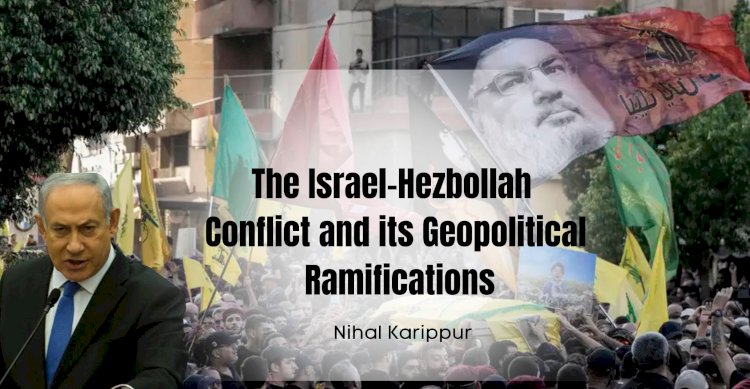


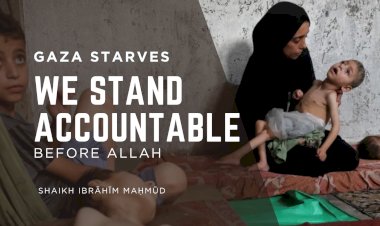
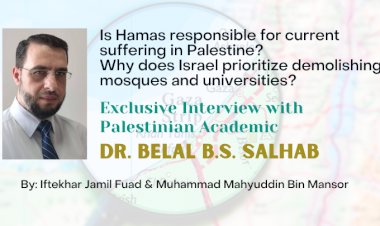
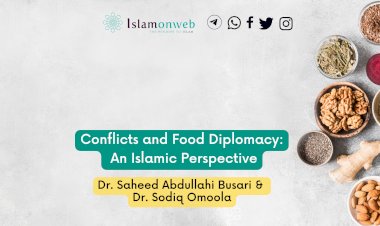
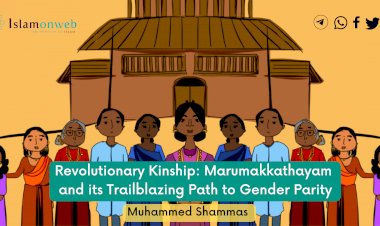
















Leave A Comment